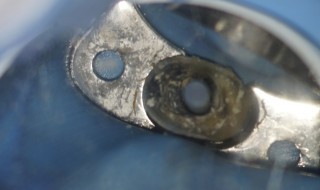In the last of a three part series, Stephen Martin rounds up his top tips on endodontics, looking at obturation, the coronal seal and core restoration.

Following on from last month’s column on canal preparation, the next stage is to obturate and restore the endodontically treated tooth. It is important in my view that these two aspects of treatment are considered together. The cleaned and shaped root canal system represents an environment in which the bacterial load has been reduced to a level that will allow healing. Together the obturation and coronal seal will combine to make this situation permanent. Less important, but still significant, the radiographic appearance of the obturation is how the quality of the endodontic treatment will be assessed.
A successful obturation
There are many methods of obturating root canals, from the traditional cold lateral condensation of gutta percha and sealer to more involved warm vertical compaction techniques. The aim of a successful obturation is to ensure that there is no available space for bacteria to inhabit. It is therefore important that the bulk of the canal is obturated completely, from apex to canal orifice, using gutta percha, with the sealer cement filling any voids. The ratio of sealer cement to gutta percha can be reduced by using the gutta percha points matched to the finishing file size, or further reduced by using a warm technique. This can be carrier-based such as Guttacore, or a warm vertical technique such as Calamus Dual.
The advent of Guttacore, which utilises a cross-linked gutta percha carrier instead of the plastic carrier in Thermafil obturators, has eliminated many of the disadvantages of carrier-based obturation, such as post-space preparation, and carrier removal, should re-treatment be required.
However, more important than the method of obturation is the effectiveness of the coronal seal, as it is this that will prevent micro-leakage of bacteria from the mouth into the canals. It is therefore vital that the floor of the pulp chamber is effectively sealed. To do this you must first ensure that the pulpal floor is clean and dry. This means taking time to verify that any excess gutta percha and sealer has been removed, particularly if a warm technique has been used. Many of the re-treatment cases I receive have an excess of gutta percha across the pulpal floor, which immediately compromises the coronal seal.

The floor of the pulp chamber should then be effectively sealed with either a resin-modified glass ionomer, such as Chemfil Rock, or with a composite. In many cases use of SDR (Smart Dentine Replacement) allows an effective seal of the pulpal floor and quick and effective build up of a core restoration, and this would be my core restoration of choice in posterior teeth. However, in more extensively damaged teeth, placement of a Nayyar amalgam core is necessary if moisture control at the gingival margins cannot be assured.
In my view many posts are placed unnecessarily, particularly in molars where the pulp chamber and, if required, the coronal part of the canal(s) provide adequate retention for the core restoration. If a post is required, due to lack of coronal tooth structure, then consideration should be given to post placement at the time of obturation. This has the advantage of providing an excellent coronal seal and allowing the preparation and impressions to be taken for a permanent indirect restoration at the obturation visit. Also, preparation of the post space can be carried out safely and quickly while the tooth is still isolated, and having just sealed the canal, the clinician is familiar with the canal anatomy.
As with all the elements of endodontics the final restoration should be planned at the outset and discussed with the patient. Of course circumstances may change through the course of the treatment and reassessment is then necessary.
With careful planning, time, and the right equipment then endodontics, while still sometimes difficult, doesn’t need to be feared and can be a more predictable and enjoyable challenge.
References
Whitworth J. (2005) Methods of filling root canals: principles and practices. Endodontic Topics 12: 2-24
Ray H.A. Trope M. (1995) Periapical Status of endodontically treated teeth in relation to the technical quality of, the root filling and the coronal restoration International Endodontic Journal 28: 12-18
View the last two articles from Stephen by clicking here and here.


